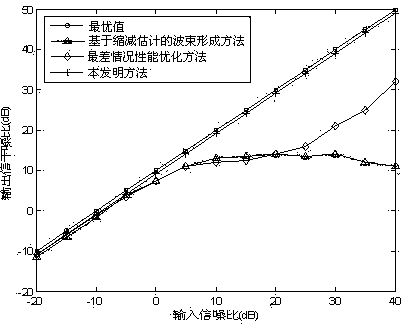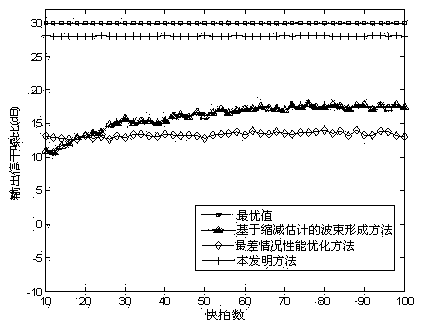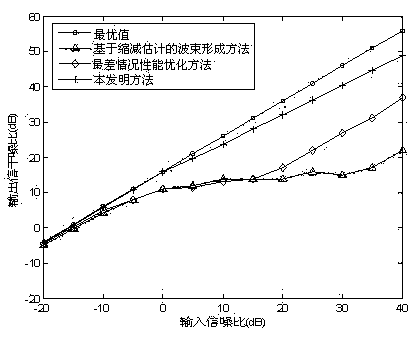Interference noise matrix reconstitution-based self-adaptive wave beam forming method
An adaptive beam, interference noise technology, applied in the field of array signal processing, can solve the problems of vector error, beam output signal-to-interference noise ratio decline, etc., to achieve the effect of improving robustness
- Summary
- Abstract
- Description
- Claims
- Application Information
AI Technical Summary
Problems solved by technology
Method used
Image
Examples
Embodiment Construction
[0020] An adaptive beamforming method based on interference noise matrix reconstruction, comprising the following steps:
[0021] Step 1. Establish a signal model for the minimum variance distortion-free response beamforming problem
[0022] Uniform line array in k The narrowband signal received at any time can be expressed as
[0023] (1)
[0024] in, M dimensional vector , and Denote statistically independent desired signal, interference signal and Gaussian white noise components, respectively. expected signal middle is the signal waveform, a Steering vector for the desired signal. The output of the beamformer is
[0025] (2)
[0026] in, A vector of complex weights for beamforming.
[0027] in the steering vector a When the accuracy is known, the optimal weight vector can be calculated based on the maximum output SINR criterion. The Signal-to-Interference and Noise Ratio (SINR) of the array output is
[0028] (3)
[0029] In the formula, ...
PUM
 Login to View More
Login to View More Abstract
Description
Claims
Application Information
 Login to View More
Login to View More - R&D
- Intellectual Property
- Life Sciences
- Materials
- Tech Scout
- Unparalleled Data Quality
- Higher Quality Content
- 60% Fewer Hallucinations
Browse by: Latest US Patents, China's latest patents, Technical Efficacy Thesaurus, Application Domain, Technology Topic, Popular Technical Reports.
© 2025 PatSnap. All rights reserved.Legal|Privacy policy|Modern Slavery Act Transparency Statement|Sitemap|About US| Contact US: help@patsnap.com



